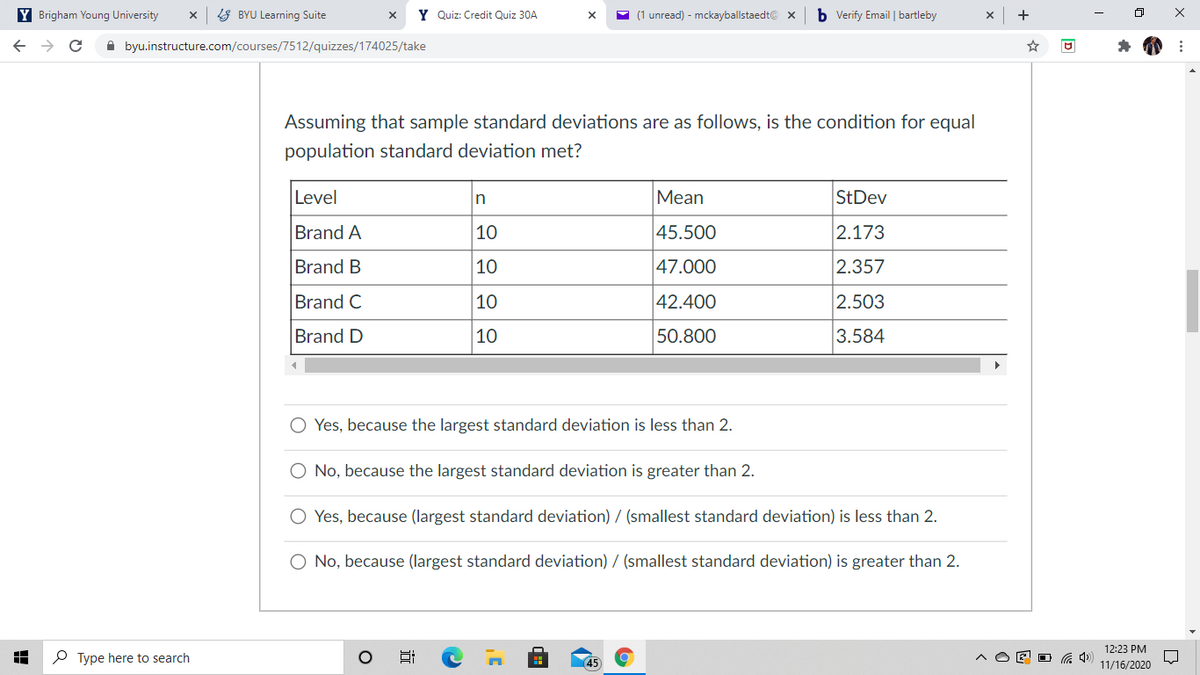A consumer group plans a comparative study of the mean life of four different brands of batteries. Ten batteries of each brand will be randomly selected and the time until the energy level falls below a pre-specified level is measured.
A consumer group plans a comparative study of the mean life of four different brands of batteries. Ten batteries of each brand will be randomly selected and the time until the energy level falls below a pre-specified level is measured.
Glencoe Algebra 1, Student Edition, 9780079039897, 0079039898, 2018
18th Edition
ISBN:9780079039897
Author:Carter
Publisher:Carter
Chapter10: Statistics
Section10.3: Measures Of Spread
Problem 26PFA
Related questions
Question
A consumer group plans a comparative study of the mean life of four different brands of batteries. Ten batteries of each brand will be randomly selected and the time until the energy level falls below a pre-specified level is measured.

Transcribed Image Text:Y Brigham Young University
& BYU Learning Suite
Y Quiz: Credit Quiz 30A
(1 unread) - mckayballstaedt@ x
b Verify Email | bartleby
+
X
A byu.instructure.com/courses/7512/quizzes/174025/take
Assuming that sample standard deviations are as follows, is the condition for equal
population standard deviation met?
Level
n
Mean
StDev
Brand A
10
45.500
2.173
Brand B
|10
47.000
2.357
Brand C
10
42.400
2.503
Brand D
|10
50.800
3.584
O Yes, because the largest standard deviation is less than 2.
O No, because the largest standard deviation is greater than 2.
O Yes, because (largest standard deviation) / (smallest standard deviation) is less than 2.
O No, because (largest standard deviation) / (smallest standard deviation) is greater than 2.
12:23 PM
P Type here to search
45
11/16/2020
近
Expert Solution
This question has been solved!
Explore an expertly crafted, step-by-step solution for a thorough understanding of key concepts.
This is a popular solution!
Trending now
This is a popular solution!
Step by step
Solved in 2 steps

Knowledge Booster
Learn more about
Need a deep-dive on the concept behind this application? Look no further. Learn more about this topic, statistics and related others by exploring similar questions and additional content below.Recommended textbooks for you

Glencoe Algebra 1, Student Edition, 9780079039897…
Algebra
ISBN:
9780079039897
Author:
Carter
Publisher:
McGraw Hill

Glencoe Algebra 1, Student Edition, 9780079039897…
Algebra
ISBN:
9780079039897
Author:
Carter
Publisher:
McGraw Hill